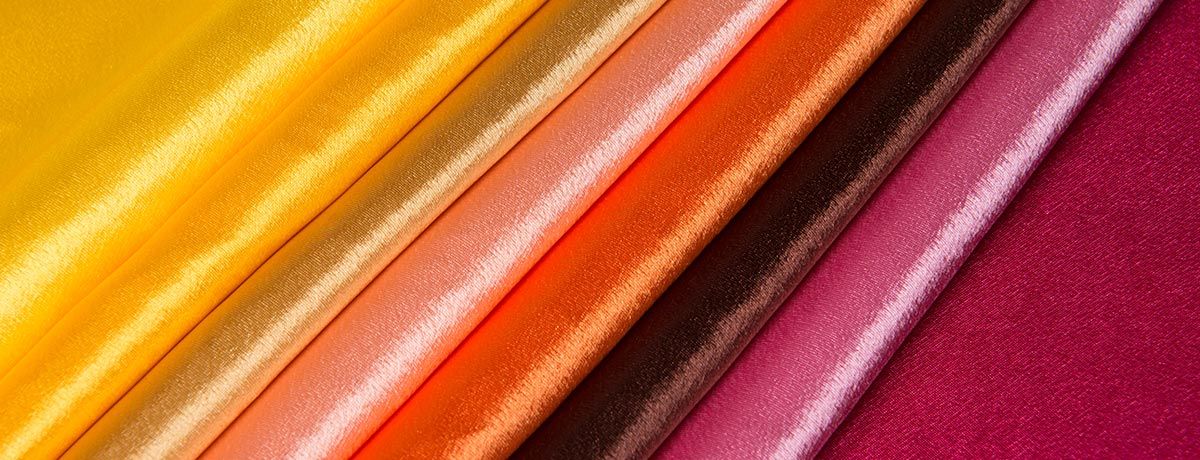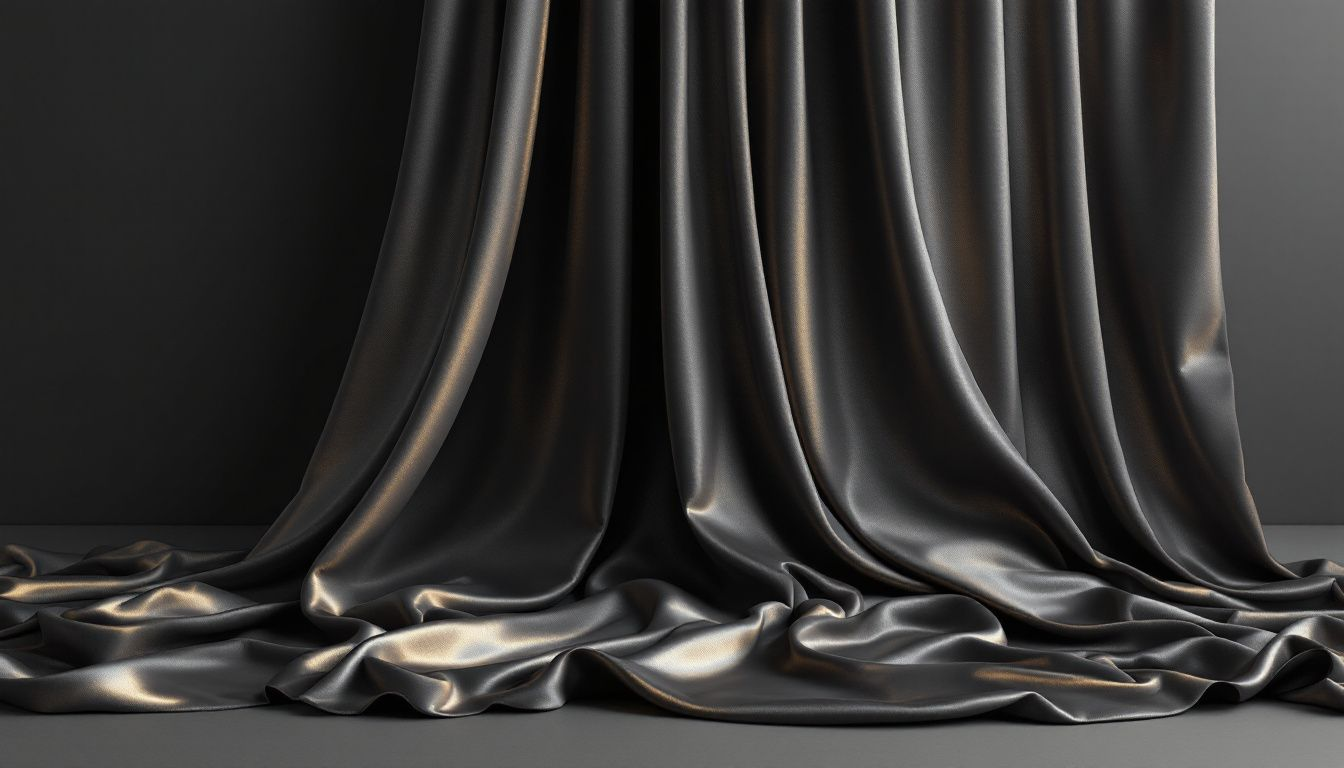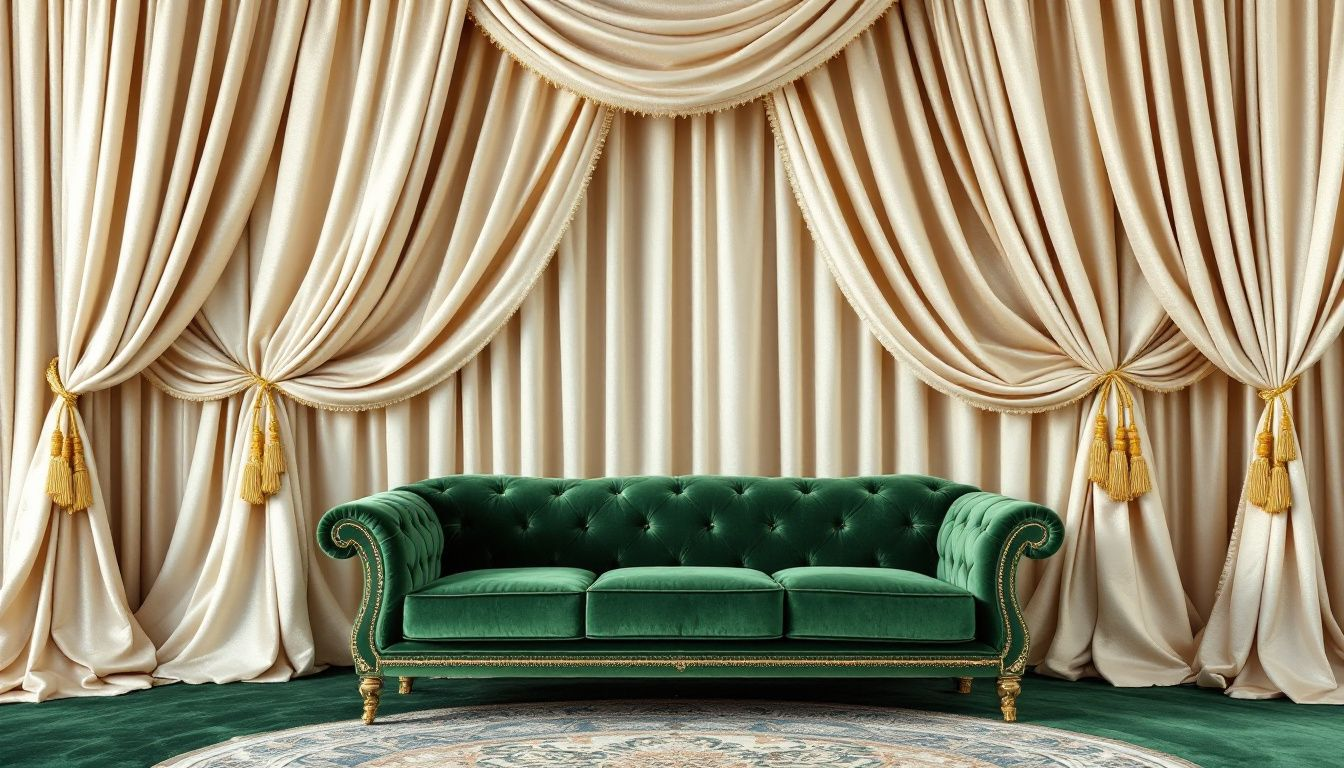Top Uses for Satin Fabric Cloth: Enhance Your Projects

- Key Takeaways
- What is Satin Fabric?
- Types of Satin Fabrics
- Buying Satin Fabric by the Yard
- Popular Uses for Satin Fabric
- Decorating with Satin: Curtains and Upholstery
- Crafting with Satin: Endless Possibilities
- Care and Maintenance of Satin Fabric
- The Elegance of Satin in Fashion
- Comparing Satin to Other Fabrics
- Summary
- Frequently Asked Questions
What is satin fabric cloth and why is it so popular? Known for its glossy finish and luxurious feel, satin is used in fashion, home decor, and crafts. This article will cover its types, uses, buying tips, and care instructions.
Key Takeaways
-
Satin fabric is celebrated for its glossy surface and elegant appearance, making it popular in both fashion and home decor.
-
There are various types of satin fabrics, such as silk, polyester, and cotton, each with unique benefits, ensuring there’s a perfect option for every project.
-
Satin’s versatility extends to crafting, allowing for creative DIY projects that add elegance and charm, from handmade gifts to stylish home items.
What is Satin Fabric?
Satin is renowned for its glossy surface and luxurious feel, often associated with high-end fashion and formal wear. The fabric’s distinctive luster and smoothness are achieved through a unique weaving technique that allows long yarns to float on the fabric’s surface, creating its characteristic sheen. This tight weave and high thread count contribute to the fabric’s soft and silky touch, making it highly desirable for clothing worn against the skin.
Satin can be made from a variety of fibers, including silk, polyester, and nylon, each contributing to the fabric’s lustrous appearance and smooth texture. The reflective quality of satin sets it apart from other fabrics, making it a standout choice for various applications. Whether it’s used in fashion or home decor, satin’s luxurious appeal is undeniable.
The fabric’s ability to create a reflective and glossy surface is not just about aesthetics; it also enhances the overall experience of wearing or using satin. The luxurious feel of satin can make anyone feel like royalty, adding a touch of elegance to any garment or decor item.
Types of Satin Fabrics
Satin fabric comes in various materials, each offering unique characteristics and benefits. Silk satin, for instance, is known for its unparalleled luxury and natural sheen, making it a popular choice for bridal gowns and high-end fashion. The natural silk fibers contribute to the fabric’s exquisite feel and luster, providing a sensory experience that is both soft and luxurious.
Polyester satin is another popular type of fabric, valued for its durability and affordability. This makes it an excellent choice for a wide range of fashion items and home decor, offering a glossy finish without the high cost of silk. Cotton satin, on the other hand, combines the softness of cotton with a satin weave, making it suitable for both apparel and home decor items like bedding and curtains.
The versatility of satin fabric allows it to be used in a variety of applications, from elegant bridal gowns to everyday items that require a touch of sophistication. Each type of satin fabric brings its own unique qualities to the table, making it easy to find the perfect match for any project or design.
Buying Satin Fabric by the Yard
When purchasing satin fabric by the yard, there are several factors to consider to ensure you get the best quality for your project. The weight and texture of the fabric can significantly impact its usability and appearance. Heavier satin fabrics are often used for upholstery and home decor, while lighter weights are ideal for clothing and accessories.
Consider the fabric’s sheen and luster. Not all satin fabrics have the same level of shine, so examining samples or detailed descriptions from reputable sellers can help you make an informed decision. Purchasing satin fabric in bulk can often lead to lower prices per yard, making it a cost-effective option for larger projects.
When shopping for satin, look for reputable sellers who provide detailed descriptions and samples before purchasing. This ensures you get a fabric that meets your expectations in terms of quality and appearance. Whether you’re planning to use satin for bridal gowns, home decor, or other projects, selecting the right type and quality of fabric is crucial.
Popular Uses for Satin Fabric
Satin fabric’s glossy and smooth surface makes it a popular choice for a variety of applications. In fashion, satin is often chosen for elegant dresses, especially for events like weddings and proms, due to its ability to create flattering silhouettes. Satin skirts, blouses, and lingerie are also favored for their sophisticated appearance and luxurious feel.
In home decor, satin is used to add a touch of luxury and comfort. Satin bedding, including sheets and pillowcases, can transform a bedroom into a luxurious retreat. The fabric’s smooth texture and reflective quality make it an excellent choice for upholstery, providing both comfort and a visually striking surface. Satin curtains and draperies enhance the aesthetic appeal of any room, reflecting light beautifully and adding a sense of elegance.
Polyester satin, in particular, is popular for its affordability and durability, making it suitable for costumes, everyday clothing, and more. Whether used in fashion or home decor, satin’s versatility and luxurious appeal make it a favorite choice for designers and crafters alike.
Decorating with Satin: Curtains and Upholstery
Satin fabric is a fantastic choice for home decor, especially for curtains and upholstery. Satin curtains are chosen for their glossy finish, which enhances the elegance of any room. The fabric’s ability to reflect light beautifully can create a sophisticated atmosphere, making it a popular choice for formal living spaces and bedrooms.
In addition to curtains, satin fabric can be used for upholstery, transforming furniture like sofas and chairs into luxurious statement pieces. The fabric’s smooth texture and glossy appearance add a touch of glamour to any home decor, making it a versatile choice for various decorative items, including cushions and table runners.
Crafting with Satin: Endless Possibilities
The versatility of satin fabric extends to the world of crafting, offering endless possibilities for DIY projects. Handmade flower bouquets made from satin ribbons are a beautiful and lasting gift option for special occasions like Mother’s Day. Satin’s smooth texture and vibrant colors make it ideal for creating visually appealing and memorable gifts.
Satin can also be used for gift wrapping, elevating the presentation of any gift and making it stand out. From DIY accessories to decorative items, satin fabric allows for a wide range of creative projects. Whether you’re making hair accessories, sashes, or home decor items, satin’s luxurious feel and glossy appearance can add a touch of elegance to any craft.
Care and Maintenance of Satin Fabric
Despite its delicate appearance, satin fabric is known for its durability and can retain its luxurious look over time when properly cared for. Follow specific care and maintenance guidelines to ensure the longevity of satin items. Satin items made from silk should generally be hand-washed in cool water with a gentle detergent, while some can be machine-washed on a delicate cycle.
To prevent snags, it’s advisable to use a mesh bag when machine washing satin garments with other items. Stains on satin should be treated promptly with a gentle stain remover to prevent them from setting. When drying satin, air-drying is preferred, but low-heat drying in a machine can be used as long as the fabric is removed while still slightly damp.
Ironing satin should be done on the reverse side using a low to medium heat setting with a pressing cloth to protect the fabric. Satin garments should be stored in clean cotton garment bags or rolled in cotton pillowcases to maintain their quality. With proper care, satin fabric can maintain its beauty and luxurious feel for years to come.
The Elegance of Satin in Fashion
Satin fabric has long been a staple in the fashion industry, known for its luxurious feel and elegant appearance. Silk satin, in particular, is crafted from natural silk fiber, providing an unparalleled sensory experience and natural sheen. This makes it a popular choice for high-end garments, including evening wear and bridal gowns.
Satin’s ability to drape elegantly contributes to flattering silhouettes that enhance a wearer’s figure, making it a favored material for dresses, skirts, and blouses. The fabric is resilient to wrinkles, helping maintain its luxurious appearance during special occasions. Satin is available in a variety of colors, supporting current fashion trends and individual style preferences.
Beyond formal wear, satin can also be incorporated into casual outfits, adding a touch of sophistication to everyday items. Satin hair accessories, such as hair bows and scrunchies, as well as stylish sashes or belts, can elevate any look with their elegant appeal. Whether for a glamorous evening event or a chic daytime look, satin offers a range of possibilities in fashion.
Comparing Satin to Other Fabrics
Satin fabric stands out among other fabrics like cotton and polyester due to its smooth texture and luxurious appearance. Compared to stiffer materials such as organza, satin provides a more flattering fit and comfortable drape, making it a preferred choice for formal wear. However, satin can be more prone to damage and staining compared to more durable fabrics like polyester.
While satin requires more maintenance and special care compared to cotton, its unique properties such as its sheen and drape make it a luxurious option for various applications. Overall, the choice between satin and other fabrics depends on the specific needs and preferences of the project, with satin offering unmatched elegance and sophistication.
Summary
Satin fabric, with its glossy surface and luxurious feel, is a versatile and elegant choice for a wide range of applications. From high-end fashion to sophisticated home decor and creative crafting projects, satin offers endless possibilities. By understanding the different types of satin fabrics and how to care for them, you can make the most of this luxurious material in your own projects. Embrace the elegance of satin and let it enhance your creations with its timeless beauty.
Frequently Asked Questions
What are the different types of satin fabrics?
Satin fabrics come in different types, such as silk satin, polyester satin, and cotton satin, each providing its own unique touch and advantages. Embrace the variety to find the perfect satin for your needs!
How do I care for satin fabric?
Caring for satin fabric is simple and rewarding! Hand-wash in cool water with a gentle detergent, or use a delicate cycle in a mesh bag, then air-dry for best results.
What are some popular uses for satin fabric?
Satin fabric is a fantastic choice for elegant dresses, skirts, and lingerie, as well as for chic bedding and stylish curtains. Its smooth texture and glossy finish elevate any project beautifully!
Why is satin a good choice for home decor?
Satin is a fantastic choice for home decor because its glossy finish reflects light beautifully, bringing elegance and a touch of luxury to your space. You'll love how it elevates the overall aesthetic!
How does satin compare to other fabrics?
Satin's smooth texture and luxurious appearance make it a flattering choice, offering a more comfortable drape than stiffer fabrics like organza. While it requires extra care compared to durable options like polyester, its elegance is worth the effort!



